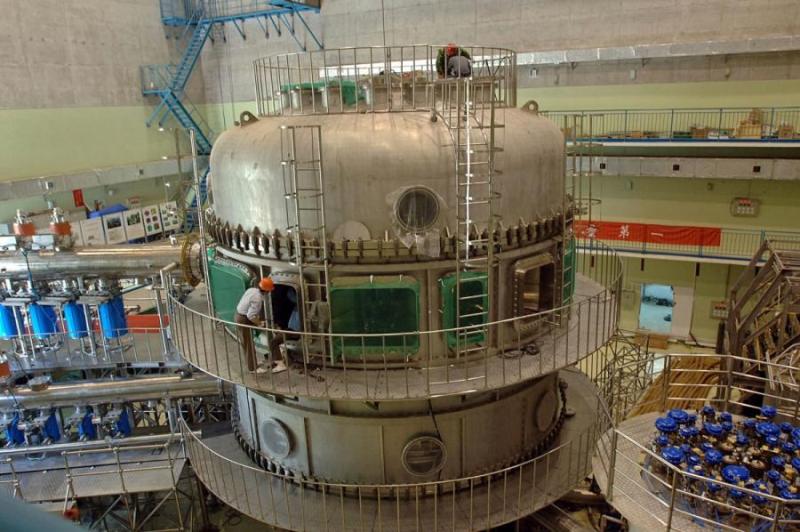

Experimental advanced superconducting tokamak in Hefei, China. ( Image by courtesy of Institute of Plasma Physics Chinese Academy of Science)
Researchers from the US and China have made progress in their joint collaboration on the use of lithium to control plasma within experimental nuclear fusion reactors.
Nuclear fusion occurs in a hollow steel donut that is surrounded by magnets called tokamak. The magnetic fields are used to contain charged gas (plasma) that is heated to 100 million degrees, which leads deuterium and tritium in the plasma to a nuclear fusion. This fusion creates energy, which can be captured to produce power.
The reactors use ultra-hot plasma to make electricity. This plasma has to be prevented from cooling and kept stable throughout the process. US researchers from several universities as General Atomics tested lithium to check its feasibility for this task.
DOE's Princeton Plasma Physics Laboratory (PPPL) led the US collaboration. Seven researchers travelled to Experimental Advanced Superconducting Tokamak (EAST) in China in December 2016 to participate in the experiments. These researchers deployed lithium in the Chinese tokamak through a lithium powder injector, a lithium granule injector, and a flowing liquid lithium limiter (FLiLi) that delivered the element in liquid form to the edge of EAST plasmas.
Results indicated that lithium can be effective in both keeping cool and remaining stable, which could be potentially leveraged to control plasma.
It has also been found that under some conditions of turbulence, when lithium is carefully injected, temperature and pressure of the plasma increases and the condition becomes ideal for fusion to occur. Although nuclear fusion offers the potential of significant amounts of energy for the future, it is expensive to research and develop into a stable power generation source.
Currently, an experimental fusion reactor called ITER is under development in France and is projected to cost €20bn by the completion of the experiment. (Power Technology.com)

86-10-68597521 (day)
86-10-68597289 (night)

52 Sanlihe Rd., Xicheng District,
Beijing, China (100864)

